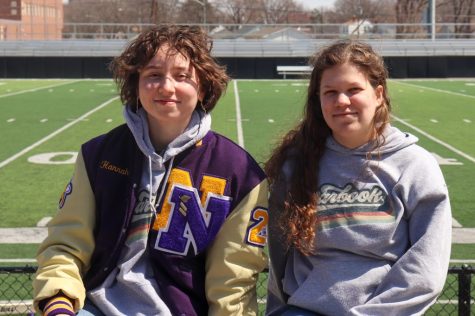It was like coming home
“I wanted my English class to come to America because I wanted them to see it for what it really is and I wanted them to grow with language and culture,” said Florian Vasper, the teacher for the nineteen German students who came to America on their spring break. In 1997, Vasper was also a German foreign exchange student that graduated from Northtown.
The English class of nineteen packed their bags from Germany to experience the day-in-the-life of students in one of America’s public schools.
“I expected it to be like you see in the films, like High School Musical,” said one of the German students, Yannick Schwartz.
While here, the students got to pick classes they normally wouldn’t have the opportunity to take in their schools in Germany. Some of the popular classes that the students chose were the science classes, Foods For Life, woodworking, psychology and sociology.
“In Germany we don’t get to pick our classes and we only have about 14 classes in our school,” said Phoebe Vogel, another German student visiting Northtown.
In the cooking classes the students were able to make pancakes.
“Pancakes here are much different than ours,” said Vogel. “They are bigger and slimmer.”
High school in Germany is much different from a typical school day in the United States.
“America is less strict,” commented a third student, Luis Fessenbecker. German school begins at seven in the morning and may dismiss between one or four thirty in the afternoon, all depending on the classes the students take. Germany has three different highs schools, “Gymnasium,” which leads to a diploma called Abitur and prepares students for university, which in Germany is completely free .
“Realeschule” is the next branch of high school, and is for students heading to, “white collar jobs.”
“Hauptschule” is the next branch of schooling, and is for students planning to enter trade and, “blue collar jobs.”
By the middle school age many students have been recommended to one of the three schools by a teacher based on their academic achievement throughout middle school.
“We don’t have big yellow buses,” commented Vogel.
In Germany, students take public transportation to school. Students can buy a monthly transportation card and take public transportation options anywhere. Having a car to depend on is not a necessity for German students.
“Many teens spend their weekends shopping, going to museums, going out at night, drinking and going to clubs,” said Steffanie Bosch, a former Northtown student who is now attending the John F. Kennedy American School of Berlin, in Germany.
“Legal drinking age for beer is 16 and harder alcohol is 18 so you see a lot of younger people out drinking on the weekends,” explained Bosch .
German lifestyle compared to American lifestyle is very different.
“In Germany, all the stores are closed on Sunday, and are closed by eight at night. Also, Germans eat more fresh vegetables and fruits,” Bosch said
During their visit to Kansas City, the German students and their host went sight seeing around the city.
As a class, they attended the World War One Museum on Thursday, March 5.
“The tower was so cool. It was interesting to see the city from the top,” remarked Yannick Schwartz. The World War One Museum is a national landmark. “It was really interesting, and there was a lot of interactive things,” said Pheobe Vogel,
“I feel so grateful to be able to come back to the United States and be welcomed here again; it is truly incredible community that North Kansas City High School has,” said Vasper, “it was like coming home.”






